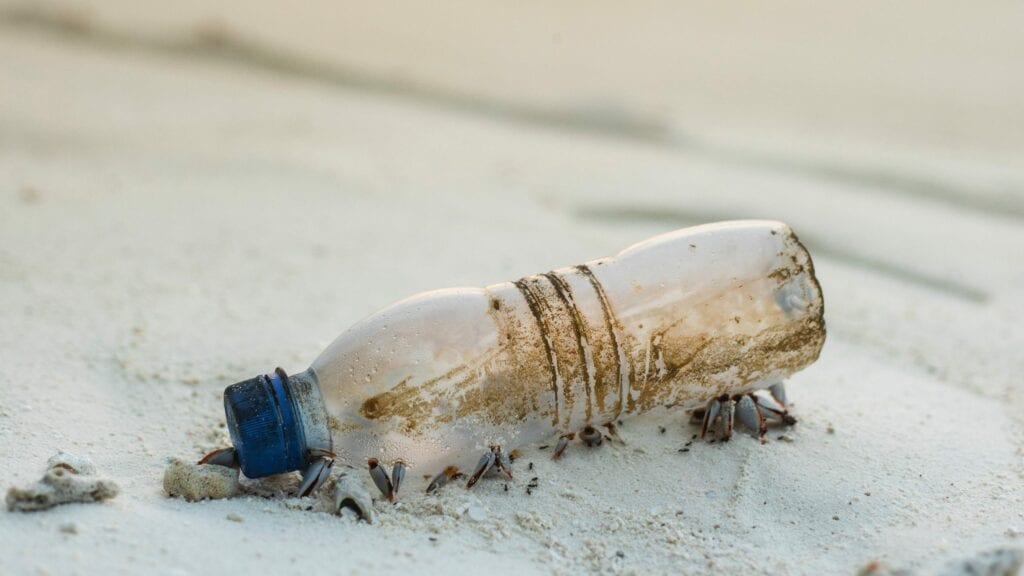4 min read
The most important climate change conference – COP26 – is just around the corner, reminding countries, leaders, media and the public, of the pressing need to fight climate change for a better collective future. Without intervention, greenhouse gas (GHG) emissions from the plastic lifecycle will make up 20 percent of the global carbon budget by 2040. Although less frequently linked, solving the plastic pollution issue is integral to achieving climate targets and in the longer run, securing a carbon-neutral future.
The circular economy, which keeps plastic in use and avoids extracting more natural resources, has the potential to address the plastic pollution problem and maximize the economic value of recycled plastic. By reusing materials, the circular economy can turn waste into a resource that can generate trillions of dollars in economic output across the globe.
Asia’s opportunity to advance the circular economy
Today, all eyes are on Asia, which is at the heart of the climate and plastic pollution crisis. Research from Accenture estimates the circular economy can generate an additional $4.5 trillion of economic output globally by 2030. Given Asia’s role as a consumption and production powerhouse, it is well-placed to show the world the potential of the circular economy at scale.
“A 45 percent reduction in plastic leakage into the oceans is possible by improving the waste management systems in only 5 Asian countries,” shares Rob Kaplan, Founder & CEO of Circulate Capital, “By deploying circular solutions and setting circularity as the default operation, the region stands to create USD 324 billion in economic growth and generate 1.5 million jobs in the next 25 years.”
With such impactful social, economic and financial outcomes as incentives, the multi-billion dollar question – quite literally – is where the money will come from to bring them to fruition. To catalyze the capital needed, we must prove that investing in this sector is scalable and can generate attractive returns, while meeting sustainability and ESG targets.
Organizations step up to do their part
We’re seeing organizations large and small taking action, through their net-zero targets, commitment to using recycled and reusable material and embedding a sustainability ethos into their corporate DNA.
“At Potato Head, our main business is hospitality, art, fashion and music – and today, a zero-waste lifestyle is at the core of our business,” explains Ratna Kartadjoemena, Entrepreneur & Impact Investor.
Danone, the food-products multinational, has set an ambitious target for itself to cut back use of non-recyclable plastic packaging material for its operations in Asia and globally.
“Our aim at Danone is to make our packaging 100% circular,” says Corine Tap, President of Asia, Africa and Middle East at Danone, “as part of this approach we are working to expand on our reusable packaging, which is already a third of our global portfolio and 70% of our portfolio in Indonesia. This means that 100% of our packaging will be reusable, recyclable or compostable by 2025.”
Impact investing generating momentum across the board
In recent years, the investor community, such as investment funds, VCs and family offices, have also galvanized around catalytic capital and impact investing. To keep the momentum going, we need to prove that investing in this sector can generate competitive returns, in order to attract further capital to fund solutions at scale.
This is why firms such as Circulate Capital are investing in companies across the value chain that generate economic, social and environmental value. Both the Circulate Capital Ocean Fund and Circulate Capital Disrupt are dedicated to financing innovation, companies, and infrastructure to prevent the leakage of plastic waste into our oceans thereby strengthening and promoting the circular economy. These funds have invested in several upcoming start-ups across South and Southeast Asia such as Reciki, Srichakra Polyplast, and which are working across different stages of the recycling value chain to advance the circular economy.
Catalytic capital for a brighter and more circular future
Capital is flowing in from large-scale institutional investors, but there is more to be done. What’s crucial now is filling the ‘missing middle’ – the gap in funding for small to mid-scale opportunities on the ground.
To do this, we must partner together and show the global community the win-win of catalytic capital – that it’s possible to fight plastic pollution and climate change in parallel with generating a return on investment.
To learn more about the circular economy, the different stakeholders and how you too can get involved watch AVPN & Circulate Capital’s Webinar on “Catalyzing capital to advance the circular economy and fight climate change in Asia.”


















